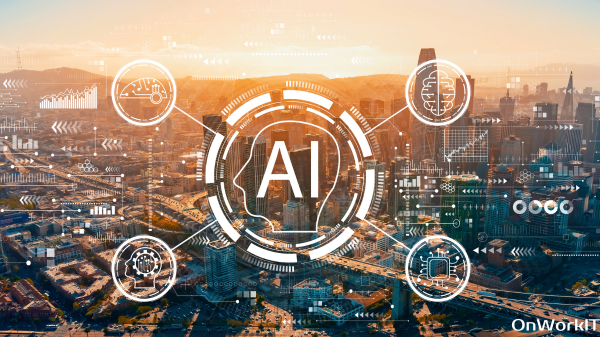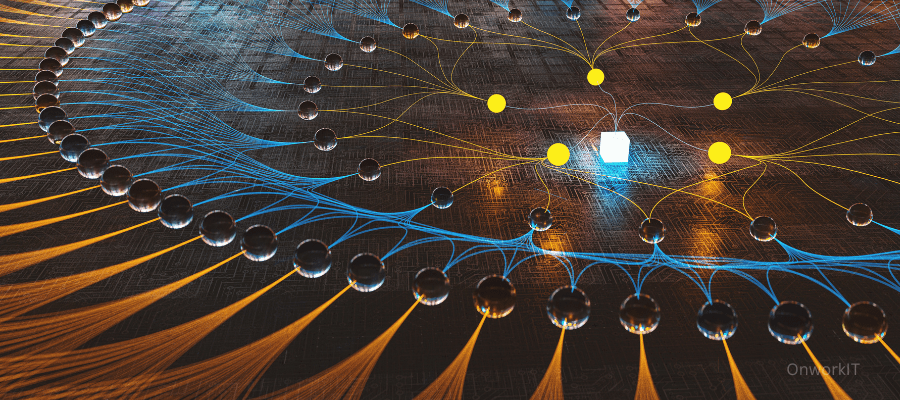Defining Artificial Intelligence
Artificial intelligence (AI) is the study of how computer systems and other technology may imitate human thinking processes. Among these processes are those of self-correction, reason, and learning. Artificial intelligence (AI) tries to build systems capable of performing activities including eye awareness, language translation, speech recognition, and decision-making that would usually call for human intellect.

Types of AI
Two kinds of artificial intelligence are usually used: restricted artificial intelligence (sometimes referred to as weak AI) and general artificial intelligence, commonly referred to as strong AI. Designed to achieve a particular activity with considerable degrees of skill, such face recognition or web searches, narrow artificial intelligence is Simple artificial intelligence includes ideas from Netflix and Amazon as well as voice helpers like Alexa and Siri. Tesla, for instance, makes self-driving cars. These systems are specific and work under limited set of principles. Artificial intelligence also shines in Medical Science and Healthcare.
On the other hand, general artificial intelligence (AI) is the sort of artificial intelligence that, like humans, can grasp, acquire, and apply knowledge in a range of situations. Since no systems can currently gain this degree of power, general artificial intelligence is still fundamentally theoretical. An crucial turning point in artificial intelligence technology would be the creation of general artificial intelligence. since it would demand computers showing perfect knowledge and the ability to execute any intellectual job a person can.
Artificial intelligence stands out from other technologies in that it can learn, reason, and even self-correct. Learning is the process of getting knowledge and comprehension of how to apply it. Reasoning is the use of the principles to obtain particular or approximative results. The ability to self-correct is the potential to raise performance independently in reply to new knowledge and criticism. These traits allow artificial intelligence (AI) systems to solve difficulties and change with the times without clear programming.
A breakthrough technology with immense potential to change human relationship with their surroundings is artificial intelligence. Its ability to duplicate human brain gives a large range of choices, thus modern technology should pay considerable attention to and expansion of this topic.
The Evolution of AI: Past, Present, and Future

Artificial intelligence (AI) has an interesting trip throughout several decades distinguished by both key monuments and times of stasis as well as quick advancement. The mental basis for artificial intelligence was built by extraordinary theoretical work by Alan Turing from the middle of the twentieth century. Developed in 1950, Turing’s idea of a machine intelligence review is currently known as the Turing examination. Thus, the framework for continued artificial intelligence study and growth was formed.
Formally, artificial intelligence began in 1956 at the Dartmouth Conference. Event planners were Claude Shannon, Nathaniel Rochester, Marvin Minsky, and John McCarthy. Many people view this events as the start of artificial intelligence. building the structure for the original spike of interest and study wave. Early artificial intelligence studies done in the 1950s and 1960s focused on symbolic thinking and problem solving, which created the first expert systems and core neural networks.
The journey did not, however, lack problems. Often referred to as the “AI winters,” the 1970s and 1980s experienced lower finance and interest resulting from fewer than expected gains. In a few areas, especially the building of expert systems and the diffusion of primitive machine learning methods, considerable advancement was made in spite of these challenges.
Present & Future Revolution:
Mass data availability, algorithmic advancements, and computer power increases have all allowed artificial intelligence to resurace in the twenty-first century. A subclass of machine learning, deep learning has changed the industry by allowing scientists to build extremely accurate models for tasks such picture recognition and speech. Natural language processing (NLP) has also made major gains suggested by the building of complex language models such as GPT-4.
Artificial intelligence offers serious future difficulties considering its great promise. One sees uses in entertainment, transportation, banking, and healthcare. AI may transform daily life, encourage innovation, and improve production. This rise, nevertheless, creates ethical problems. Among the issues demanding of careful thought and regulation are data privacy, algorithmic discrimination, and the effects of artificial intelligence on the workforce.
Future direction of artificial intelligence will most likely be decided by a convergence of science findings and society responses. Realizing AI’s full promise and avoiding its risks will depend on ongoing study and talk. Though its future looks to be as exciting and revolutionary as its past, artificial intelligence has a long way to go.
AI in Practice: Calculations and Statistics
Among the complicated computer systems generating artificial intelligence are statistical models, data structures, and algorithms. These features represent the backbone of artificial intelligence systems since they help data assessment, conclusion generation, and decision-making skills. AI’s computing power is gained from neural networks, supervised learning, unsupervised learning, reinforcement learning, and other learning models.
On a labeled dataset with known input-output pairs, an artificial intelligence model is taught via supervised learning. By doing this, the model may learn predict new, unknown data as well as the mapping skills. Two widely utilized applications are picture recognition and language translation. Conversely, unsupervised learning finds underlying patterns or trends in unidentified data. Here we utilize dimensionality reduction methods and grouping algorithms with uses in consumer segmentation and outlier identification.
Reinforcement Learning

Reinforcement learning is another basic strategy whereby an agent gets improved decision-making ability by acting and getting input in the form of fines or benefits. Dynamic, complicated settings including autonomous driving, gaming, and robots all gain greatly from this method. Particularly deep learning models, neural networks are meant to mimic the structure of the human brain—which comprises of interconnected layers of neurons. Content creation, natural language processing, and speech recognition all have major value on these networks. They shine particularly in managing vast amounts of unstructured data.
Effective training of artificial intelligence systems needs on huge sets. By helping models learn from a large range of huge datasets, big data has greatly boosted the potential of artificial intelligence. In industries including finance, where artificial intelligence boosts algorithmic trade and fraud detection, and healthcare, where it aids sickness diagnosis and treatment plan customization, this has been particularly revolutionary.
Still, the creation and application of artificial intelligence systems offer huge processing hurdles. Complex model training needs for technologies like Tensor Processing Units (TPUs) and Graphics Processing Units (GPUs) that can handle huge operations. Moreover, efficient resource and performance management solutions as TensorFlow and PyTorch depend on effective software designs. These tools improve AI system scalability, usability, and efficiency.
Public Perception and Reviews of AI
Public view of artificial intelligence (AI) is seen through many prism, which causes a range of feelings and opinions. AI is acclaimed for its capacity to revolutionize many diverse industries, consequently producing greater output, higher health results, and a better quality of life. While AI-powered diagnostic tools are already helpful with early stage illness discovery, automation in industry promises to enhance output and decrease running costs.
Still, these hopeful frames of view frequently collide with serious worries. One of the most regularly voiced fears is job movement. Rising numbers of people worry about the future of human labor as artificial intelligence systems and robots advance in sophistication. Especially in areas like customer care and manufacturing. Privacy problems are important as artificial intelligence technologies might demand vast amounts of data and risk data security and individual privacy rights. Moreover, there is extensive talk on the moral consequences of artificial intelligence in law enforcement and autonomous systems such as self-driving cars.
Surveys & Studies
Studies and surveys help one to understand these numerous points of view. For instance, although most people think that artificial intelligence (AI) offers benefits, a large majority of respondents in a recent Pew study Center study still worried about the wider social ramifications of the technology. Expert opinions serve to stress this problem even more. Regularly underlining AI’s changing capacity, technology leaders and AI experts also support its ethical development and application. On the other side, ethicists and sociologists usually warn against unfettered AI development by stressing the need of robust legal frameworks.
One finds it impossible to overestimate the effect on public opinion of popular culture and the media. Artificial intelligence (AI) is often portrayed in the media as either terrible dangers or utopian saviors, too broadly exaggeratedly. By creating fears or expectations, these images could affect public opinion. Thus, fostering educated debate is really important. By crossing the gap between scientific breakthroughs and cultural acceptance, stakeholders may guarantee that artificial intelligence research meets ethical principles and helps the public interest.









6 thoughts on “Artificial Intelligence (AI) & Its Role in a Modern Era”